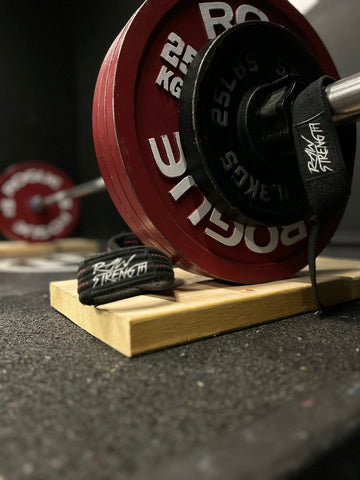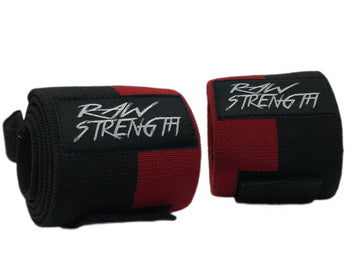Sport Barbell Guide: Premium Weight Training Equipment For Gyms
by Jason Newland on Oct 08, 2024

Complete Barbell Guide: Best Equipment for Weight Training
Barbells are a piece of equipment you just can’t ignore no matter what stage weightlifting is at for you. For one, Barbells have stood the test of time in fitness, and for a good reason: Barbells are versatile, effective, and necessary for gaining strength. In this blog, we will explore the benefits of barbell exercises, the superior effectiveness of barbell only training, and why a barbell workout is critical to any gym.
What Is a Barbell?
But what is a barbell first, before we get into the benefits? A barbell is a long, generally straight, bar of steel used to hold weight plates on each end. There are different sizes and types available, but Olympic barbells are the most common you’ll see in gyms because they can tolerate very heavy loads.
Additionally, barbell bars are made for specific exercises like squats, deadlifts, and overhead presses. A barbell can be between 5 to 7 feet long and weigh anywhere from 15 to 45 pounds depending on the weight.The Benefits of Barbell Exercises

-
Strength Training for Multiple Muscle Groups
The foremost bar exercise benefits is that it hits multiple muscle groups at a time. Instead of the machines that only focus on isolated movements, barbells help you perform complex exercises, such as squats, deadlifts, and bench presses, training your whole body through your legs, back, and core.
-
Versatility in Workouts
There’s an endless repository of back barbell workouts and barbell workouts from back barbell workouts. You can do both upper body barbell workouts and lower body with one piece of equipment. Barbells work well in any routine, whether it is shoulder barbell exercises, or a barbell for lifting heavy squats.
-
Functional Strength
Barbell helps develop functional strength, bearing practical utilization in this functional strength is performed every day in adulthood. Barbell weight lifting exercises are compound movements and help strengthen coordination, balance, and strength in real-life situations.
-
Gradually Increase Weight
The advantage of the barbell is that it can be progressively overloaded. By using weight plates you can gradually increase the resistance, making it easier to see where your progress is coming from, and helping you achieve your fitness goals.
-
Full Body Workouts
You can load up with barbells to do full body workouts without having to have lots of different pieces of equipment. Workouts like clean and jerk or deadlifts use a group of muscle groups, so you’re getting more for your workout effort.
-
Perfect for Home Gyms
Barbells are a must-have if you are building a home gym. The size of the Kettlebell allows them to pack a wide range of exercises into one very portable and affordable piece of equipment if you want to do barbell only training.
Dumbbells vs Barbells: Why Choose a Barbell?

The question is, should you dumbbell or barbell? Barbells are great tools for weight training barbell, but they don't have the same advantages as the rest of them.
- Heavier Lifts
Using barbells you can lift heavier weights than using dumbbells. Safe and evenly loading weight on said barbell is possible with the barbell's design, especially during squat and deadlift movements.
- Stability
Dumbbells lack more stability than barbells. Less of a chance of losing control, it’s safer for things like bench presses and overhead presses with both hands gripping a single bar.
- Target More Muscle Groups
In the dumbbells vs. barbells debate, barbells win when it comes to engaging more muscle groups during heavy compound exercises. For instance, by using a barbell back workout you can lift heavier and hit your traps, lats, and rhomboids more effectively.
Barbell Training for Upper Body and Lower Body Workouts
-
Upper Body Barbell Workout
Shoulder barbell exercises like barbell press and barbell rows are some of the best exercises for your upper body. The exercises involve the shoulders, the chest, and the arms to help build the muscle and increase the strength.
-
Back Barbell Workout
By far the most popular of the back barbell workouts, barbell row, will help you build lats and traps strength. Another good exercise to work the lower back and glutes is deadlifts.
-
Core Barbell Workout
So, using a barbell in core exercises, such as standing presses and barbell rollouts, assists you with strengthening your core. Resistance in the core barbell workout engages your abs and lower back muscles and is more effective than they are with the basic barbell workout.
Disadvantages of Barbell Exercises
Despite the many barbell exercise benefits, there are a few potential downsides:
- Limited Range of Motion
Barbells restrict your range of motion in exercises like the bench press, and may actually limit your range of motion in general when compared to a pair of dumbbells. Sometimes this can result in muscle development imbalances.
- Higher Risk of Injury
Heavy barbell lifting is susceptible to improper form or overload and results in injuries. To do it right you have to learn the correct technique and begin with an appropriate weight that gets gradually heavier as it gets easier.
Also Read: What Are the Top Benefits of Lifting Wrist Wraps?
How to Use a Barbell Effectively
To get the most out of your barbell workout, you need to know how to use it properly. Here's a brief guide:
-
Start with the Right Weight
First, your beginners can start with an unloaded barbell practicing proper form then you can add weight plates.
-
Focus on Form
If you’re going to do compound movements, like squats or deadlifts, focus on your form. Work on keeping your back straight, engaging your core, and keeping good alignment.
-
Gradually Increase the Weight
When you become comfortable with this form, start increasing weight as long as your muscles are challenged.
Barbells are an invaluable tool in any gym, offering a range of benefits from strength training to functional fitness. Whether you're looking to build muscle, increase functional strength, or get in a good full body workout, incorporating a barbell workout into your routine is essential. So, grab a barbell and start lifting heavier to reach your fitness goals!
Raise your workouts with top-tier gym equipment! Shop now at Raw Strength and gear up for strength, performance, and results. Get everything you need to build your dream gym today!
FAQs
1. How to use a barbell?
You will want an appropriate weight for your fitness level and then grab the bar tight. Use full range and good posture for your exercises.
2. How much does a barbell weigh?
Olympic barbells, or the smaller types, weigh as light as 15 pounds, while standard barbells weigh about 45 pounds.
3. What is a barbell?
A barbell is a long bar used in weightlifting, designed to hold weight plates at either end.
4. How long is a barbell?
Most barbells are between 5 to 7 feet long.
5. How to clean a barbell?
If you are going to clean your barbell, clean it down after using it with a cloth and some mild cleaner to prevent rust and build-up. There’s one other thing that you may want to do – add a small amount of oil to the knurling of the barbell to help with grip.
6. What does a barbell do to your body?
The addition of a barbell to exercises increases the rate of multifocal muscle activity and functional strength and improves coordination and balance.
7. What are the disadvantages of barbell exercises?
Its primary disadvantages include limited range of motion and if proper form is not followed, a greater risk of injury.
Read More: Which Generation Goes to the Gym the Most?
- At Home Barbell,
- Barbell For Home Gym,
- Barbell Guide,
- Barbell In Gym,
- Best Barbells,
- Fitness Gear Barbell,
- Gym Equipment,
- Home Gym Sports Barbell,
- How to Choose the Right Barbell,
- Olympic Barbell,
- Powerlifting Sports Barbells,
- Professional Sports Barbells,
- Raw Strength Apparel,
- Sport Barbell,
- Sports Barbell,
- Strength Training Sports Barbells,
- Top Barbells,
- Training Barbells,
- Weight Lifting Barbell,
- Weight Training,
- Weight Training Barbell,
- Weightlifting




